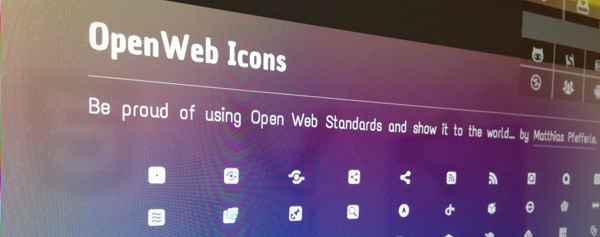
Tim Pietrusky hat so ne Art "Google Web Fonts" für Icon-Fonts gebastelt, was alleine natürlich schon einen Blog-Post wert wäre… er hat aber außerdem noch die OpenWeb-Icons eingebaut, was definitiv einen Blog-Post wert ist 😉
Dank Tims "We Love Icon Fonts" lassen sich die Fonts mit folgenden paar Zeilen CSS-Code einbauen:
@import url(http://weloveiconfonts.com/api/?family=openwebicons);
/* openwebicons */
[class*="openwebicons-"]:before {
font-family: 'OpenWeb Icons', sans-serif;
}Code-Sprache: CSS (css)Das Projekt ist übrigens Open Source und Tim würde sich sicherlich über jede Hilfe freuen!